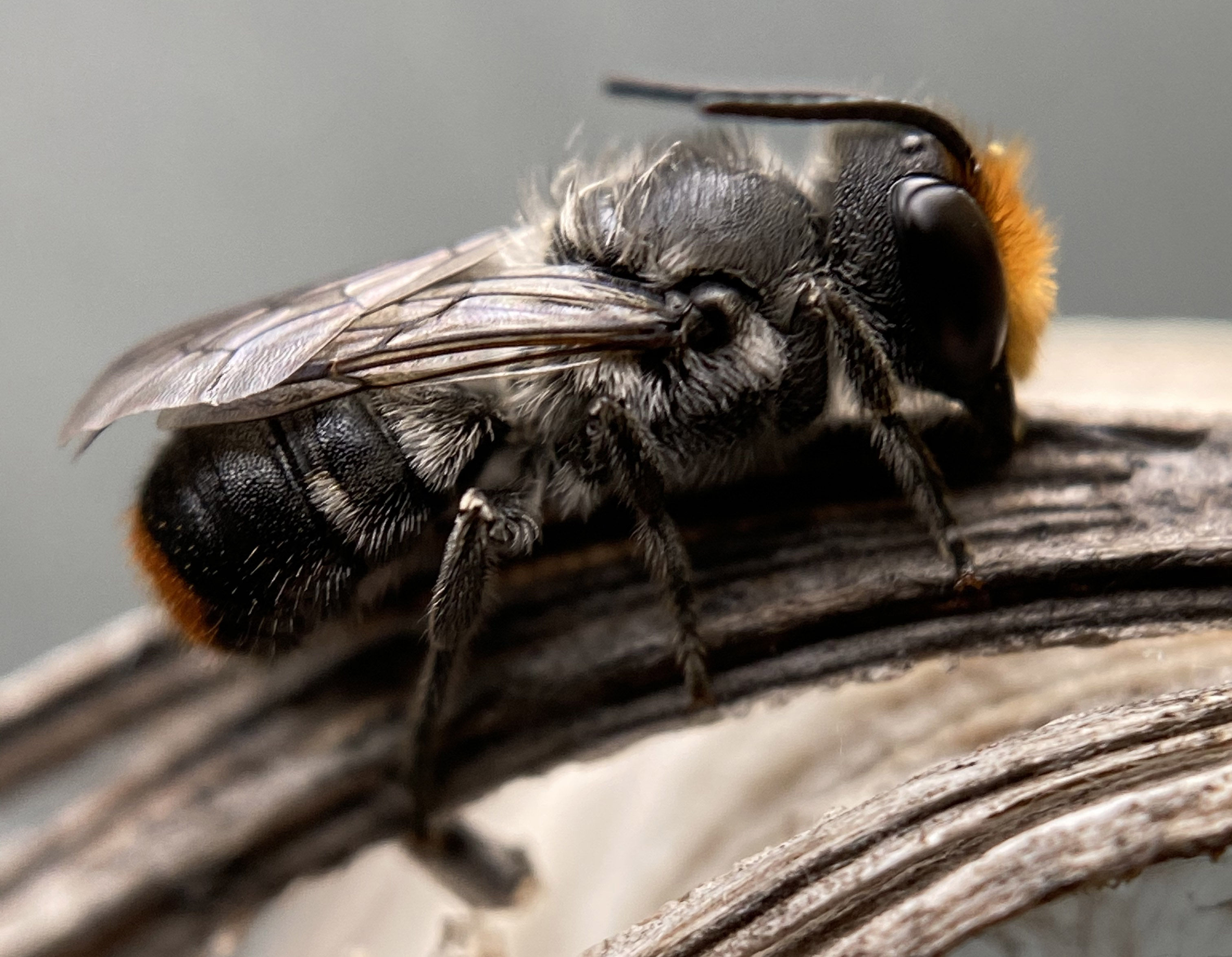Native Bee Lessons

Emma Cutting, Founder of The Heart Gardening Project (THGP) and The South Melbourne BEE Gardens, was the recipient of one of our Giving grants last year and this project is going from strength to strength.
Emma is a passionate street gardener and amateur plants woman. On her street gardening journey she has been fuelled to do more and more to create beautiful diverse gardens for both wildlife and humans to enjoy. She is motivated by the climate crisis, her daughter (EJ is now 3), the bushfires of 2020, the struggling mental health of our community in our new coronavirus reality and the calls to action by world leaders like Sir David Attenborough.
THGP has grown from a few street gardens to 41, has given away over 350 pollinator-loving plants and planted over 1300 plants in under maintained, under nourished patches of public land in South Melbourne. She is now expanding this project to her latest initiative - the Melbourne Pollinator Corridor (MPC). Read on to hear more about this initiative and, in particular, what Emma learned from the OGV- funded lessons with native bee expert Kit Prendergast:

“The Melbourne Pollinator Corridor (MPC) is an 8km urban wildlife corridor linking two large green patches along the Birrarung, Westgate Park and the Royal Botanic Gardens Victoria. We are aiming to have 18,000 indigenous plants in 200 indigenous-focused gardens on mainly public land by the end of 2024 with the focus on creating habitat for native bees, other native pollinators and flower-visiting insects. This project will be community-led, driven and maintained with citizen science being conducted. It has been designed within local government constraints but not with government. The MPC will connect nature to nature, humans to nature and humans to humans and is the main focus of The Heart Gardening Project (THGP). Gardens in the MPC will use a specially designed plant list along with revegetation, organic and permaculture principles.
With no background in any of this (I am a pianist and piano teacher!!), I have been, and continue to be, on a very steep learning cliff (definitely not a gentle curve!)!
Part of the Open Gardens Giving Grant was to get some precious time to consult with native bee expert Kit Prendergast.
Having the opportunity to talk with Kit about native bees was such a treat and boy the times were jam-packed! I had been talking with her for about a year prior to these consultations so we had a foundation on which to build from.
My aim with these six sessions with Kit was to have as wide-ranging conversations as possible regarding native bees in order to help clarify my thinking. This information, along with my own research and talking with other native bee experts, was used to communicate clear and factual information regarding native bees to people interested in learning about the MPC.

In addition to the fact that native bees are simply awesome and fascinating, some of the interesting things around native bees I take away from my time with Kit include the following points (this information is taken from the Melbourne Pollinator Corridor Handbook - by me! - which OGV has generously helped fund in numerous ways):
• native bees are a vital part of our ecosystem and have co-evolved with our native flora over millions of years developing relationships that are very complex and sometimes exceedingly specialized.
• native bees are disappearing fast especially in our urban environments mainly from habitat loss and fragmentation, climate change and the use of pesticides and other similar poisons.
• native bees can be compared to the ‘canaries in the coal mine’. Their presence, or lack thereof, warn us of health problems within our ecosystems. If native bees aren’t around then many other native insects aren’t around either.
• native bees help pollinate our veggies and are important for our food security.
• most shop bought native bee hotels are not suitable for native bees.
• our native bees can be incredibly varied in how they look, ranging from furry teddy bears to wasp-like and sleek. But conversely, some species look so similar that native bee researchers have enormous trouble telling them apart!
• most native bees in Australia are solitary i.e. they live by themselves, not in hives.
• most adult native bees die off as it gets colder while the offspring develop in their nests in winter to emerge as adults when it gets warmer in early spring.
• no male bee of any species can sting and, unlike the female honeybee, female native bees do not die after they sting (please note they are not aggressive and will really only sting if handled roughly).
• some native bees are generalists (they feed on many types of flowers) but most are specialists (they feed on specific types of flowers).
• unlike honeybees (that can forage up to 5km from their hive) larger native bees can only travel up to a few hundred meters with smaller native bees potentially travelling less than that (this is why the MPC gardens are to be approximately 50m apart).
This information from Kit has helped me immensely in the growth and development of the MPC and I am extremely grateful to OGV for their continued support. For further information on the THGP/MPC please go to www.theheartgardeningproject.com or check out @theheartgardeningproject on Instagram.
Emma Cutting
Founder of The Heart Gardening Project
